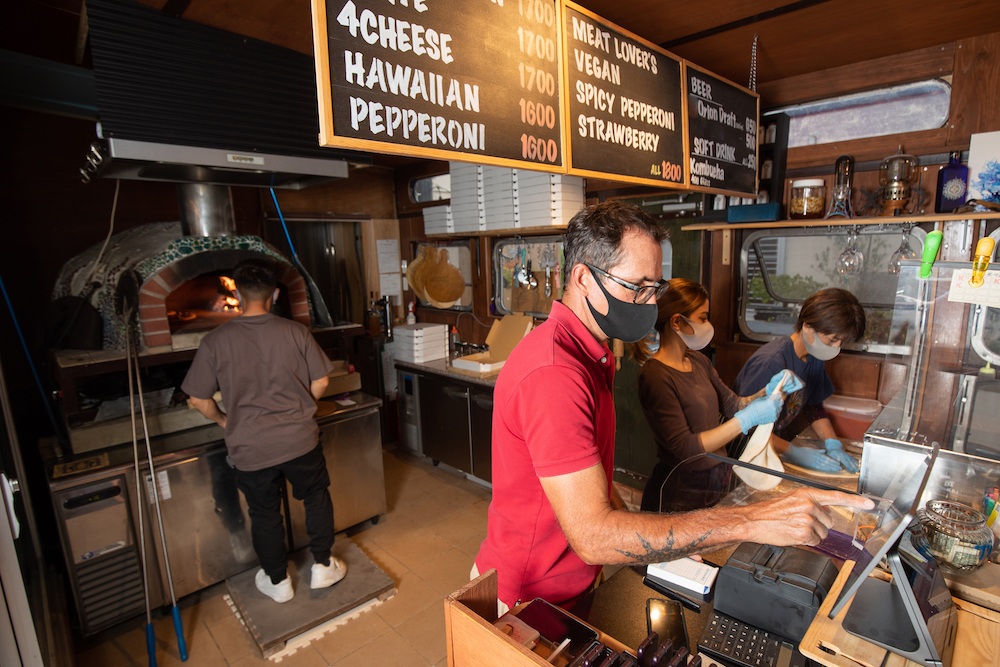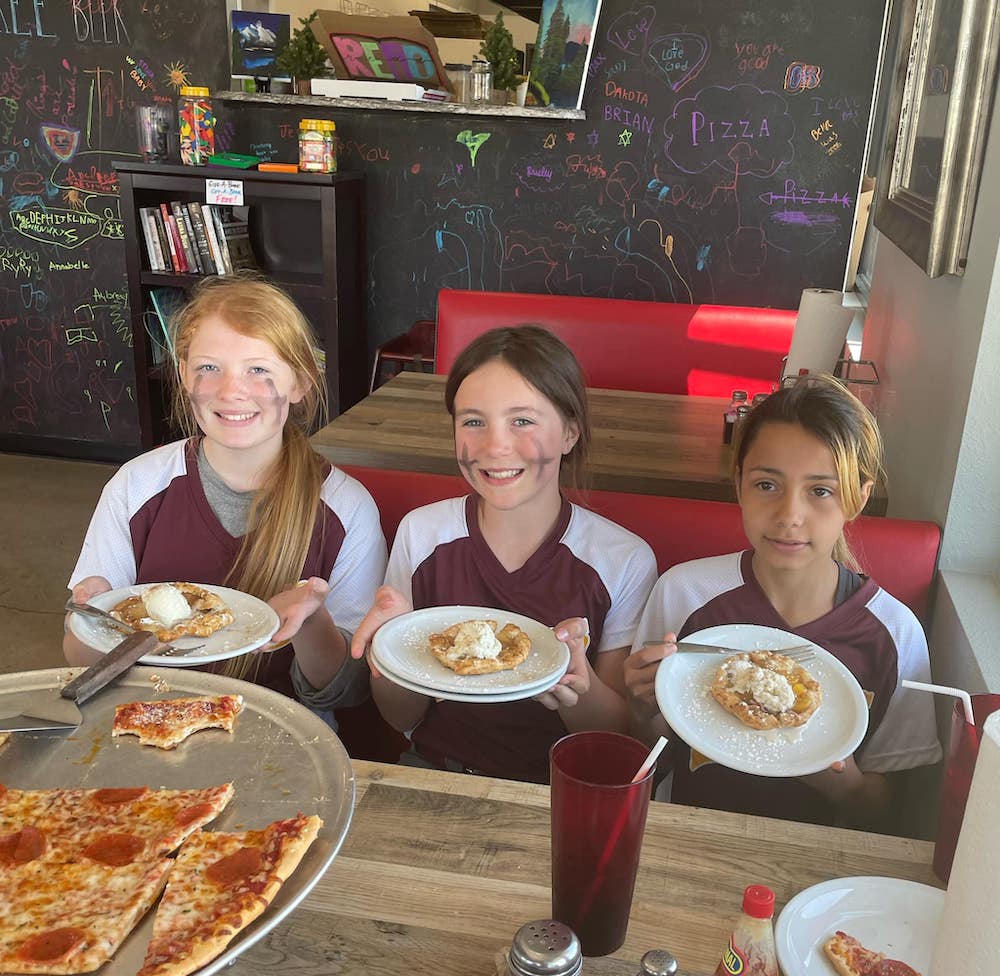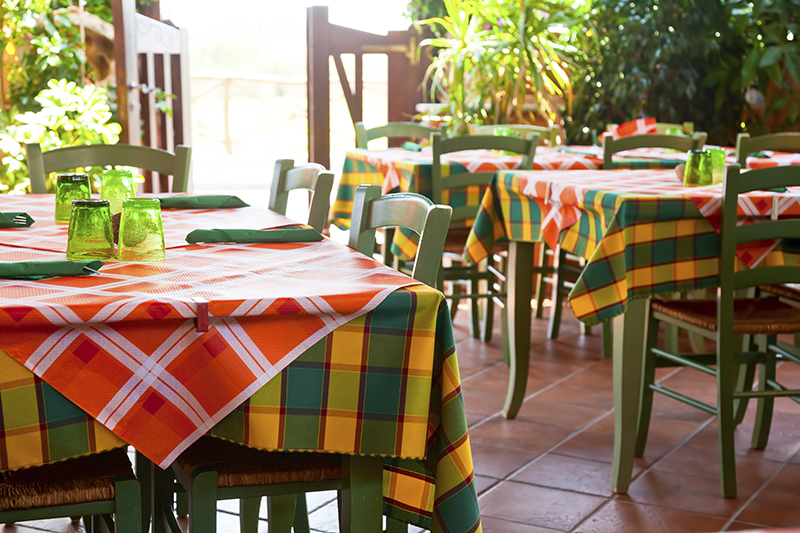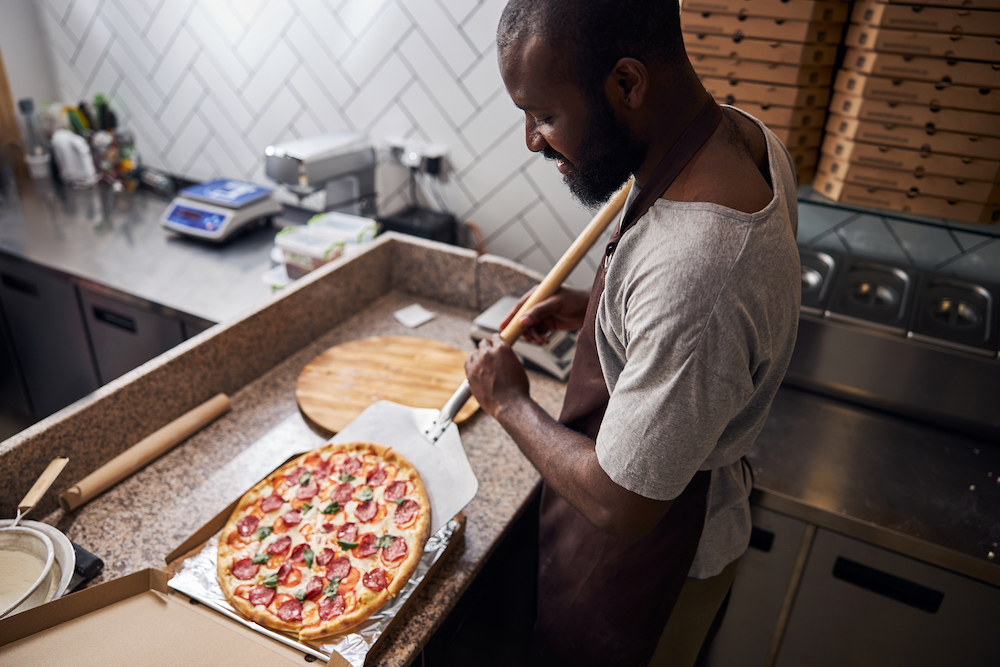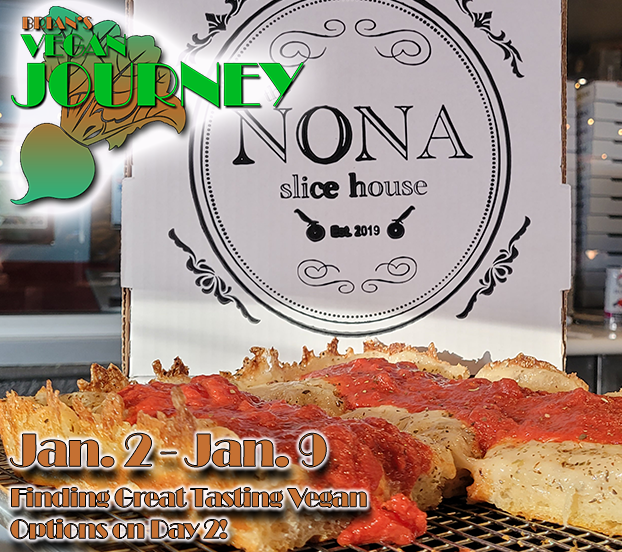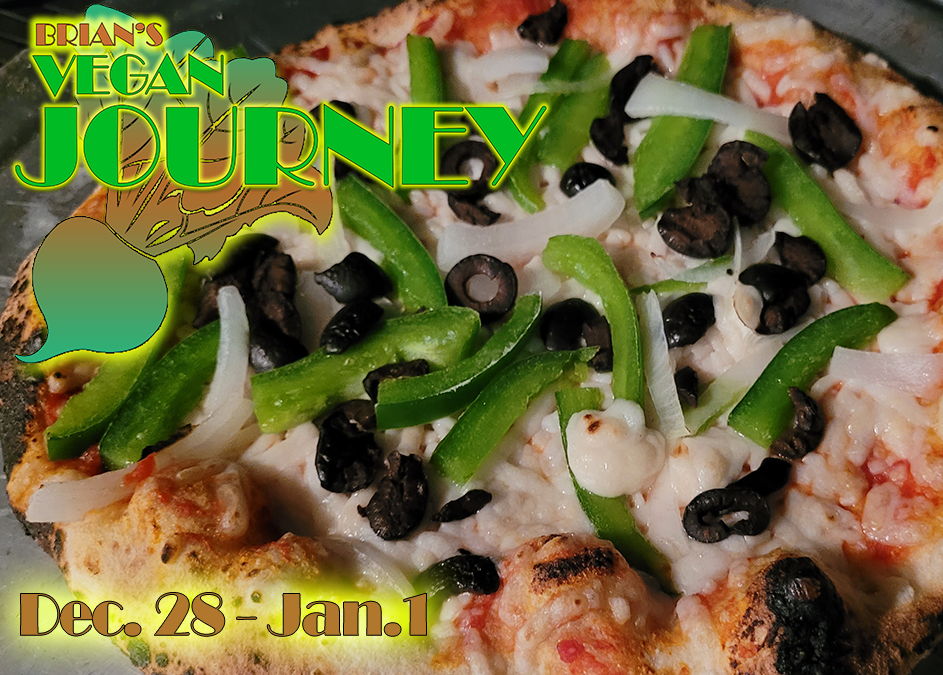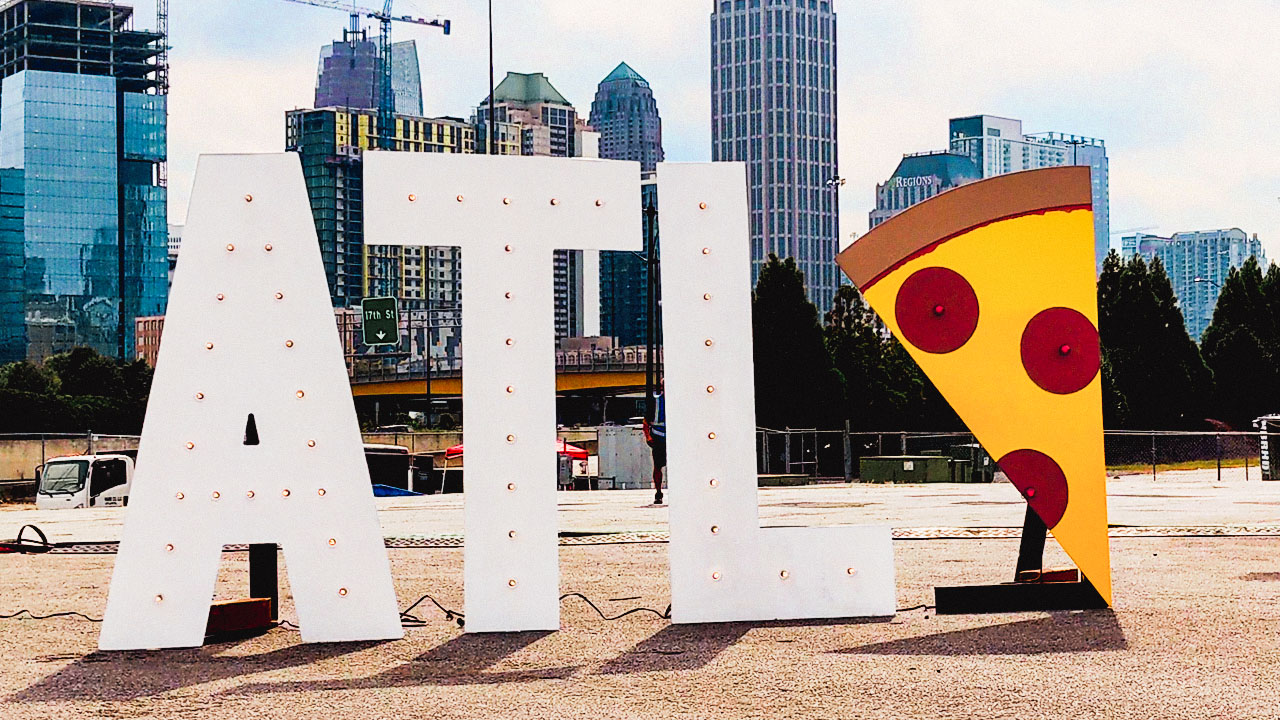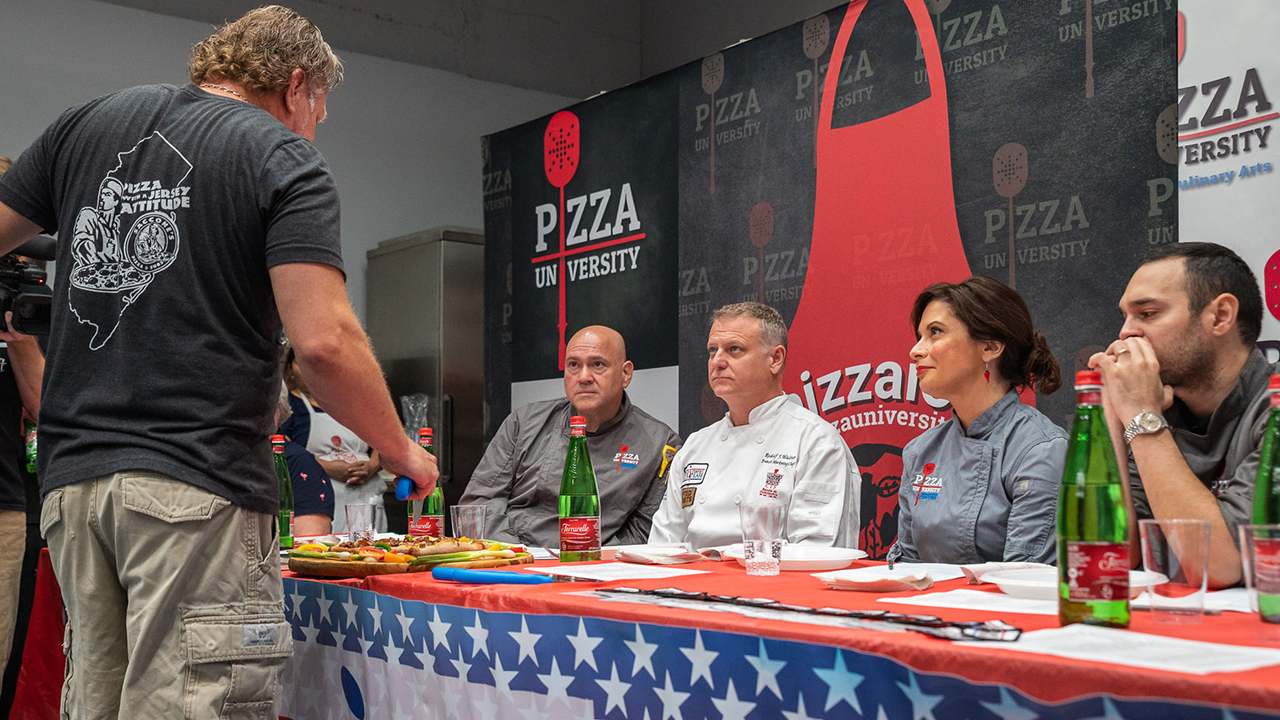Pizza restaurants have scrambled to meet the growing demand for gluten-free pizza and other dishes in recent years, but some have rushed the product onto their menus without fully understanding the health issues involved.
“There is still a significant diet-fad element to gluten-free, and as a business person I understand businesses’ need to make money,” says Paula Cooper, founder of Dine Aware in Toronto, which helps foodservice companies develop a culture of awareness about food allergy and gluten-free communication and practices. “So, from that perspective, I understand the haste to add a gluten-free pizza on the menu. The problem is, that approach is very short-sighted, often only catering to the fad crowd and forgetting the core—celiac customers—who will be there long after the fad has disappeared.”
Many restaurants don’t do enough to prevent gluten cross-contamination and leave customers with celiac disease feeling cheated or unappreciated, notes Cooper, who has the disease. “There is nothing more annoying, from a consumer perspective, than to be lured into a restaurant with promises of a gluten-free pizza only to learn it has been rendered completely unsafe with prep and cooking practices,” she says.

In honor of Celiac Awareness Day, to be observed on Thursday, September 13, PMQ asked Cooper to offer tips on how to make your pizzeria more celiac-friendly. Here are her expert recommendations:
- Dough Preparation: Don’t prepare gluten-free dough and regular dough at the same time. “If you prepare the dough in-house, do it at a completely separate time than when prepping gluten-based dough,” Cooper says. “Restaurants I know like to [prep their gluten-free dough] first thing in the morning on sterile clean surfaces.”
- In the Air: Particles of gluten-based flour don’t just magically disappear once you’ve stored your dough balls away. “That pesky flour dough sits in the air, then lands on whatever is around, like bad luck and rain,” Cooper notes. “Do what you can to keep gluten-free dough covered and away from the main gluten-filled prep station and flour buckets until it is time to use it. Then protect it while it’s in use.”
- Surfaces: “Don’t use your floured boards to stretch or shape your crust,” Cooper warns. “Designate an area of the kitchen away from these surfaces to prepare the gluten-free dough and orders. It doesn’t need to be a large area, just one that’s deemed protected and very, very clean.”
- Utensils: Gluten-free pizzas and other foods merit their own designated utensils, Cooper says. Label your gluten-free utensils and identify them with colored handles. And make sure your staff knows the difference.
- Toppings: Designate and label separate containers for toppings used exclusively in gluten-free orders. “There is far too much gluten transfer in the prep station,” Cooper says. “Hands going from crust to toppings creates huge cross-contact. Without having separated toppings, it would render everything else you do useless.” (Cooper adds that wearing and changing gloves does not, in and of itself, prevent cross-contact.)
- Ovens: “Here’s where it gets super-tricky,” Cooper says. “I know that most established restaurants cannot afford to purchase ovens designated only for gluten-free. But you can make your shared oven safer.” She recommends the following:
- Designate certain trays for cooking only gluten-free pizza.
- Make sure there is good separation between gluten-free and non-gluten-free pizzas in shared ovens.
- If your oven has more than one rack, designate the top rack exclusively for gluten-free pizzas. “Otherwise, like the rain, gluten will fall down on gluten-free pizzas underneath,” Cooper says.
- For gluten-free pies baked in a shared wood-fired oven or any oven where the risk of ingredient transfer is high, cover the top of the pizza with foil, and make sure it’s well-covered. Only remove the covering in a safe area.
- Anything that touches the cooking surface of the shared oven (i.e. designated pans, pizza peel) will have come in contact with gluten, increasing the risk of cross-contamination. So, take care that it doesn’t touch other surfaces you have designated for gluten-free pizzas.
- Always use designated utensils for every stage of gluten-free prep and cooking.
- Cleaning: Keep everything you use for gluten-free prep and cooking extra-clean at all times. This includes surfaces, equipment, utensils, cloths, etc.
- Packaging: Keep a separate set of pizza boxes for gluten-free orders to minimize cross-contact. “Get stickers or a sharpie to identify to the customer that the order is gluten-free,” Cooper suggests.
- Communicate: Train your staff to communicate forthrightly with your celiac guests. Inform them about all steps taken to prevent cross-contact and what you know about your ingredients so they can make informed decisions. When the pizza is served, your staff should always confirm that the order is gluten-free and reassure the customer of the cross-contact prevention steps used in its preparation. “These two simple communication steps have an enormous, positive impact on the interaction,” Cooper says. “I personally only experience this type of stellar communication about 10% of the time.”
- Training: Make sure your back-of-house staff is well-trained to maintain your gluten-free practices and that your front-of-house staff knows how to communicate them.
As a celiac patient, Cooper acknowledges that eating out can be “an exercise in risk management. I know that, unless an establishment is 100% gluten-free, there is always going to be a risk of cross-contact—always,” she says. “However, if I know the company and employees take cross-contact prevention and allergen awareness seriously and have a good understanding of how to minimize these risks, I feel more comfortable ordering.”
And if you really want to score points with your celiac guests? Add a few high-quality gluten-free beers to your menu. “There’s nothing I miss more than a good slice and a cold beer,” Cooper says. “Make it an exceptional local craft beer, and you will be a pizza god to me.”
Related: How pizza restaurants can tap into the gluten-free gold mine




